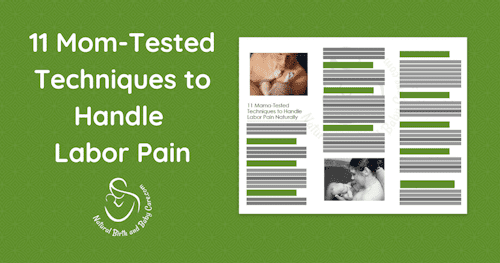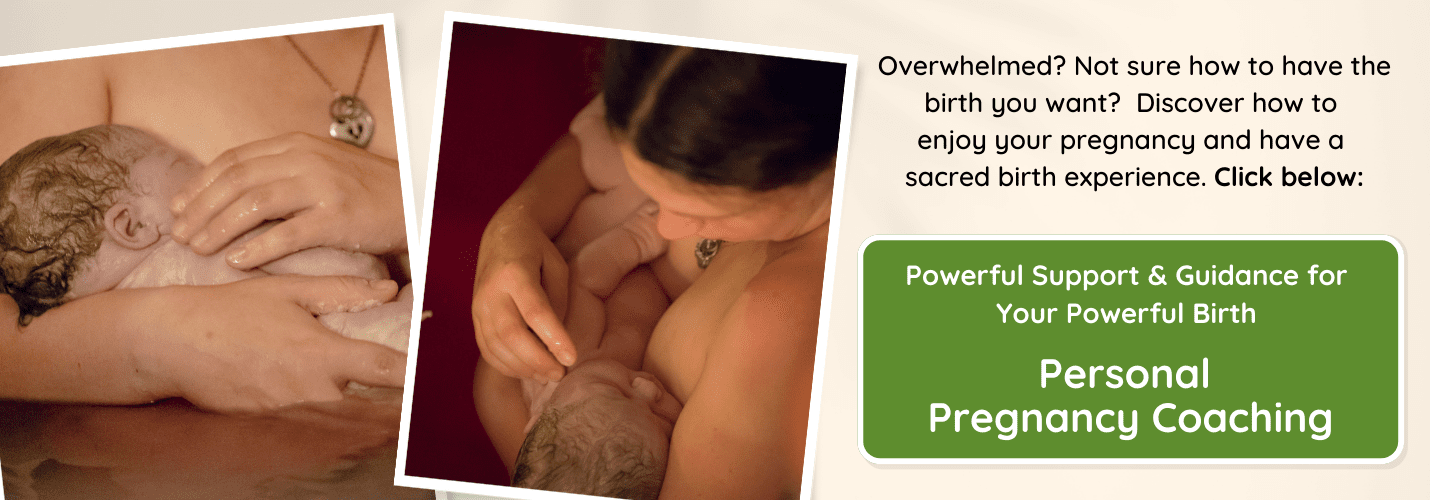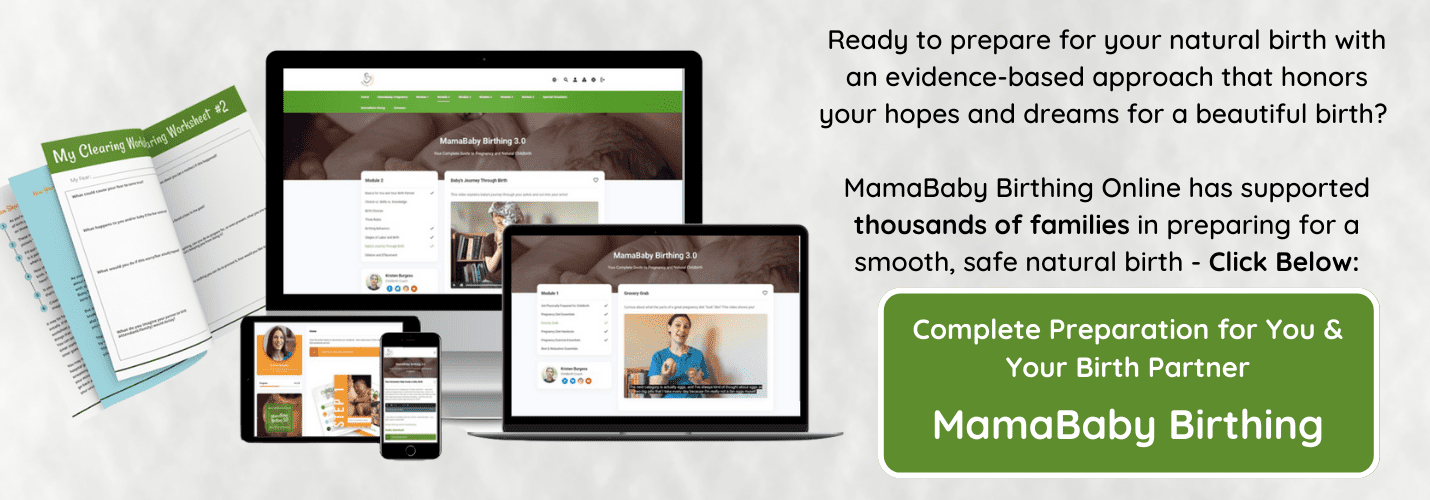A good pregnancy documentary offers an eye-opening view of pregnancy, birth, and babies. These birth documentaries show you options and highlight how maternity care works for real women worldwide.
Filled with personal stories, delivery scenes, and commentary from medical experts, midwives, and birth workers, these films may completely change how you look at having a baby!
While each mother is unique and you need to choose the right birth for you, bring an open mind to each film – you’ll have a much greater understanding of pregnancy, natural birth, and breastfeeding!
I’ve put my top three choices first, then listed other popular picks in no particular order. Grab a snack and a notebook, then settle in to binge-watch some eye-opening movies!
Important Note: If you have access to a university or college library online, many of the documentaries are likely available streaming. Check your local library’s film databases, too!
My Top 3 Pregnancy Documentary Picks
Birth As We Know It – 2006
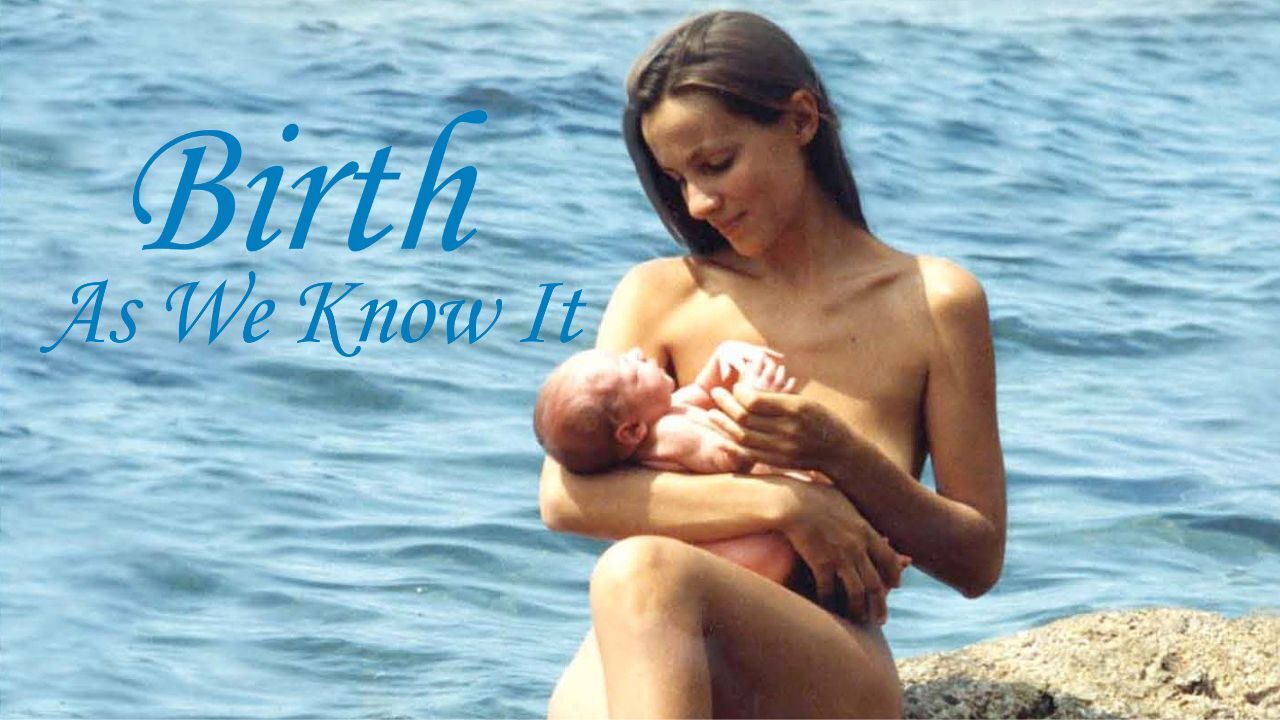
Stream from Filmmaker: Birth As We Know It
“Birth is not a social event, it’s a mystery in action”
Though this film is older now, it’s an absolutely must-see. It’s my favorite birth documentary! Many movies provide information on what natural birth is, or on the latest scientific research on pregnancy and birth.
Birth as We Know It, however, highlights the journey of pregnancy and birth and how to navigate that.
The film walks you through the emotional, mental, and spiritual parts of preparing for a great birth from early pregnancy on.
Peaceful, Empowering Births
Some of the births shown in the film are older, but they are inspiring classics. You will love how alert the babies are and the love and joy of the couples. The women are peaceful, powerful, and inspiring!
It does touch on the impacts of some of our choices, including showing a cesarean and featuring a small segment on circumcision. These contrast sharply with the rest of the footage, highlighting the impact of these practices and helping you pause to reflect on what you want for your baby and your family.
As a bonus, the film features many scenes of birth in the Black Sea, babies and children swimming there, and some crazy polar bear dipping pregnant mamas!
The film also includes the natural home birth of twins.
Watch a Mother Catch Her Own Baby
Don’t miss Tatyana’s birth – it will help you realize just how beautifully capable women are of birthing their babies into their own hands!
Bonus – 25 min version free here: Birth Into Being
Some of the same footage is part of this short, free documentary. The commentary is different and also excellent to watch. The focus of the older short film is to show how birth can be a powerful, calm, and positive experience. I highly recommend watching both!
The wisdom of the Russian midwives into birth is priceless!
(NOTE:Want Labor Pain Techniques that REALLY Work? Get these 11 mom-tested techniques for handling contractions from start to finish Get the mom-tested natural labor techniques here.)
The Milky Way – 2014
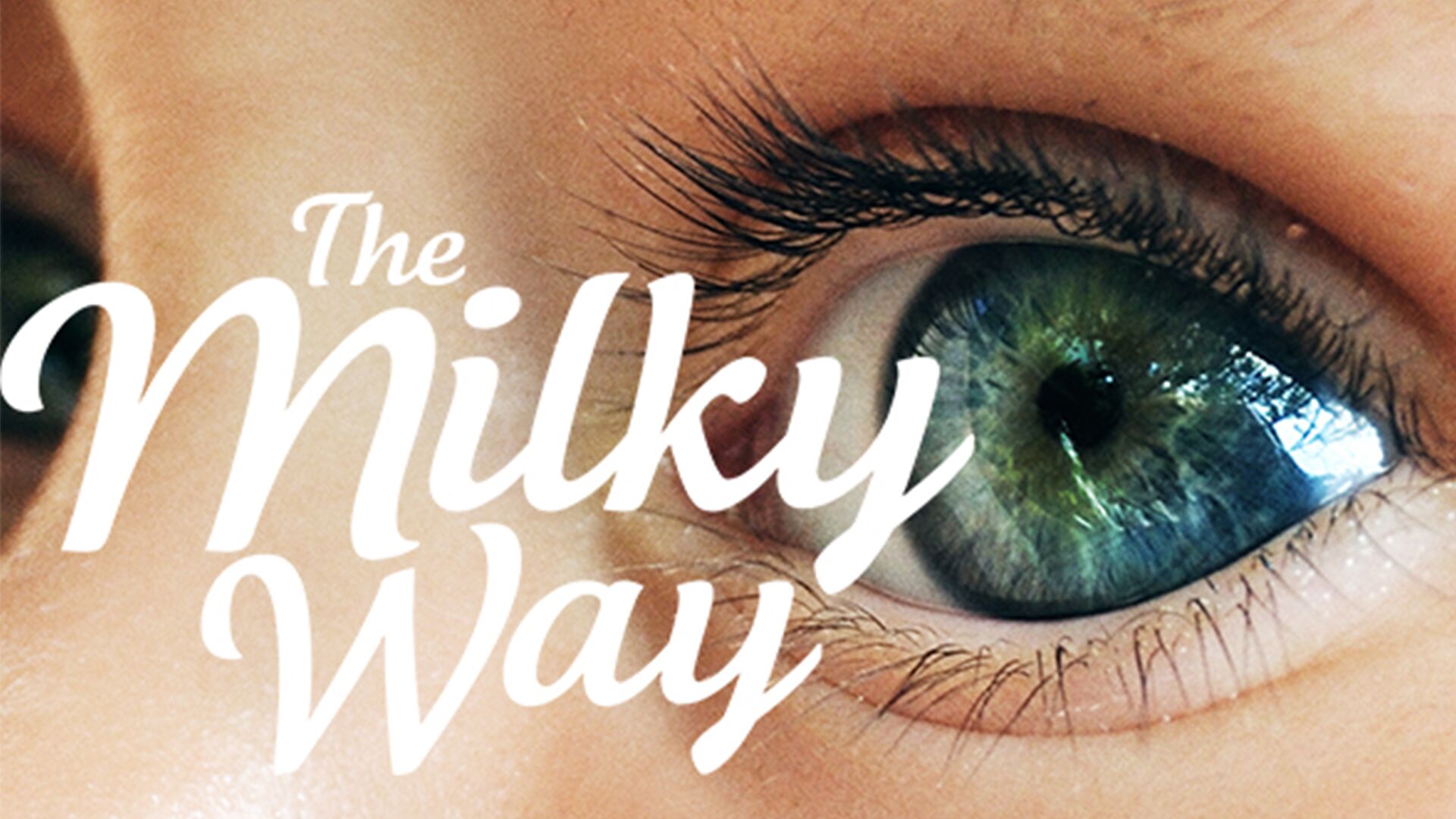
Free with ads on Amazon Prime: Watch The Milky Way
“Women can trust themselves, they can trust their bodies, and they can trust their babies”
“Restore the nursing mother to a place of honor”
The Milky Way is easily the most powerful documentary on this list. Every pregnant woman needs to see this film!
Far more than a simple breastfeeding documentary, the film explores the intrinsic importance of mothers. It affirms, over and over (and backed by science), how important YOU are to your baby. It demonstrates, over and over, how vital YOUR intuition and inner knowing are for your baby.
There is an amazing amount of information on how vital breastfeeding is to our babies. And there is so, so much more than that.
The Full Importance of Breastfeeding
The documentary’s scope is great but it manages to pull everything together very well. It includes beautiful examples of historical paintings of breastfeeding mothers, statues, and other art from many cultures.
It touches on the problems with the second wave of feminism in the 70s – with the desire to distance women from the obligation to motherhood and define them as the same as men, rather than another class altogether.
It also addresses the sexualization of women’s bodies and the disappearance of positive breastfeeding imagery – women themselves see their breasts in only a sexual sense.
The Importance of Skin-to-Skin (Plus Why Your Baby Wants to Breastfeed!)
Co-sleeping, the importance of skin-to-skin, and more is all in the documentary.
And of course, it includes a detailed discussion on the intricate and extensive benefits of breastfeeding. This goes far beyond nutrition – do not miss this documentary!!
Click here for more on the benefits of breastfeeding!
Orgasmic Birth – 2008
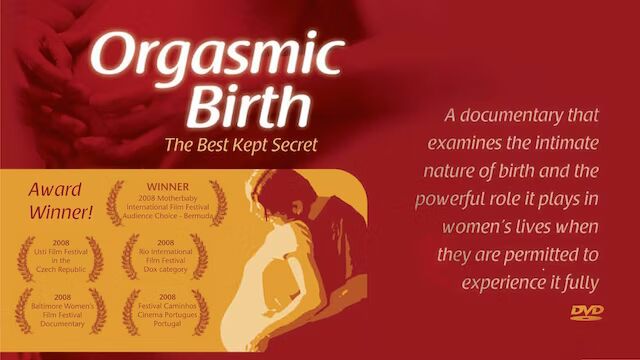
Stream from Filmmaker: Orgasmic Birth: The Best-Kept Secret
Stream from Internet Archive: Orgasmic Birth
“If you were told that you could have one of the most physically, emotionally, spiritually transcendent moments of your life, and here’s a map to get there, would you really say no?”
“To be realistic is to expect your birth to be wonderful.”
While the title Orgasmic Birth may feel shocking to some, this is a wonderful documentary that shares many different types of birth experiences, including beautiful home births.
The expert commentary in this video is some of the best, with excellent coverage on what normal, physiological labor can be.
Understand How Birth is Biologically Meant to Work
After watching this video, you’ll clearly understand how the birth process is supposed to work and why the pain-focused model of birth doesn’t tell the whole story.
You’ll understand the pros and cons of epidural and you’ll understand the way babies and moms benefit from natural birth.
This documentary is a must-see to fully understand childbirth and the possibility of having a beautiful, transformative birth experience. It tackles many cultural myths about childbirth in a fair, balanced way.
Additionally, this film gives insight for mothers who are survivors of abuse, something I haven’t seen in other documentaries. Highly recommended!
Would you like more information on the science behind ecstatic birth? Click here to listen to my podcast on ecstatic birth with Dr. Sarah J Buckley!
Birthing Justice – 2023

Watch on PBS with Passport: Birthing Justice | PBS
“Our goal is joy. Our goal is pleasure”
“You can have joy and justice together”
The US maternal mortality rate is shocking – and when you look at the rate for black and brown women, we are among the worst in the entire world. Maternal mortality has tripled in the last 30 years. Preterm birth rates are 50 percent higher.
In short, we have a maternal health crisis, especially for black women and other minority women.
This film zeroes on black mothers, who suffer disproportionately poor pregnancy outcomes. Black babies are also much more likely to die in their first year.
Experts, including doctors, midwives, neonatologists, and researchers, speak throughout the film. The voices of mothers are also shared and amplified.
Problems (and Solutions) for Black Moms
Filmmakers do an excellent job highlighting the problems black moms face while exploring solutions being implemented around the country. It looks at how the medical system has failed black families, especially black mothers and newborns.
Creating better continuity of care, respectful care, and women’s health solutions are all explored.
Political Advocacy for Birth and Moms
Birthing Justice also does a good job exploring political advocacy to influence maternal health policy, something only a few documentaries explore.
It discusses the Black Maternal Health Momnibus Act and helps demonstrate how political activism can create change on a community level, an important message for mothers.
Women of color and their infants represent preventable deaths, and making sure policy makers hear women’s voices goes a long way toward keeping people of color (and all mamas) safer.
While the film exposes the problem in detail, it ends by empowering black mothers and women with a vision of joy. I absolutely love the powerful, joyful note the film ends on. This one is another must-see!
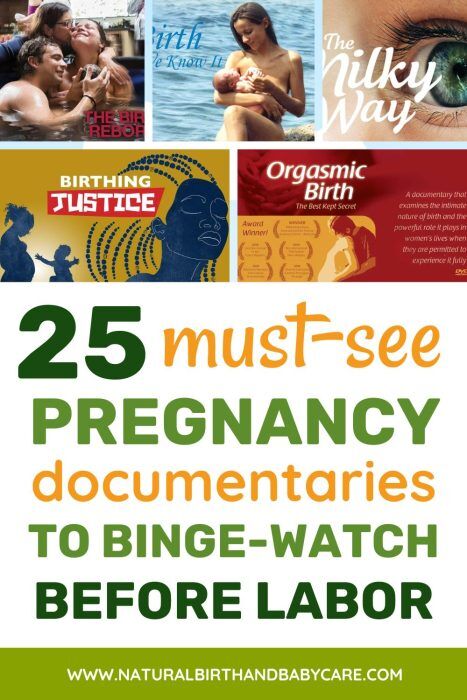
Why Not Home – 2016

Rent/Buy from Filmmaker: Watch — Why Not Home?
Why Not Home explores the safety of home birth in the United States by interviewing medical professionals who chose to have their babies at home!
A nurse practitioner, labor and delivery nurse, OB/GYN, and others are among those whose pregnancies are followed.
You get to see many of these women give birth!
Many childbirth experts are also interviewed, and the safety of homebirth is examined closely.
Debunking Birth Myths
This film is important to watch because it debunks many myths (such as Friedman’s Curve, an old and flawed method for determining how fast labor should move).
It also examines the statistics of home birth in both Europe and the United States, and where there may be weaknesses in analysis and studies.
Birth Equity
Why Not Home has a powerful segment on birth equity and some discussion on how to create safety for minority mothers and babies. Jennie Joseph, a pioneering Black midwife in Florida, speaks on the film. I love this quote from one of the student midwives:
“If they see a black midwife and a black woman doing it, they’ll see it’s for all women, not just rich white women.”
Overall this film is well-worth watching, especially if you appreciate scientific evidence. Many fathers speak on the film, too, so it’s great for sharing information and data with your husband or parter.
There is an extensive research and discussion guide available – click here!
Want personal support to stay healthy and low-risk through your pregnancy? Longing for authentic guidance to make your sacred birth dream a reality?
Click to book a pregnancy and birth visioning call with me. We’ll talk about your hopes and dreams and explore if my pregnancy coaching program is a good fit for you.
These Are My Hours – 2018
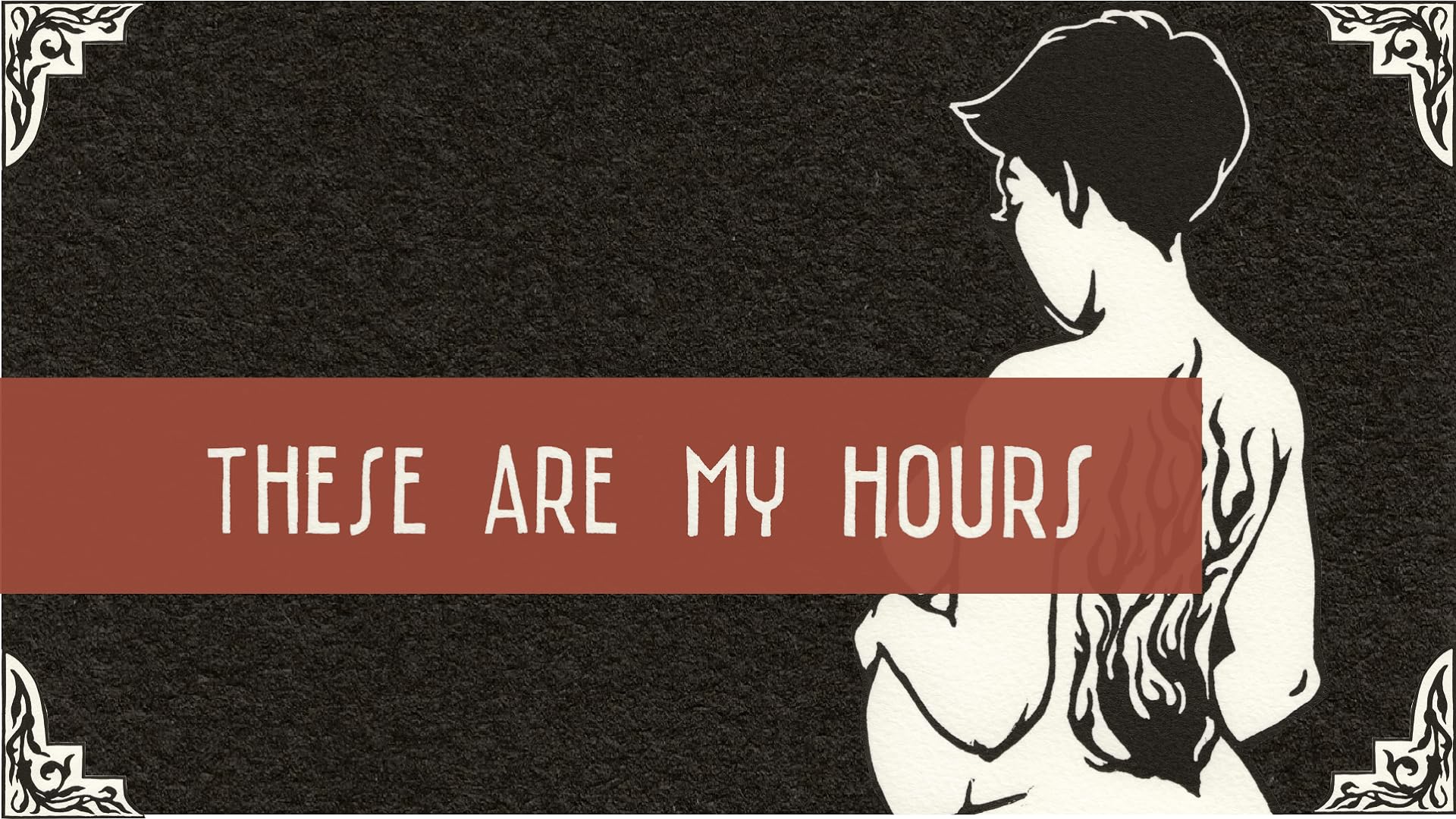
Rent/Buy on Prime: Watch These Are My Hours
These Are My Hours is a beautifully filmed chronicle of one woman’s home birth. The birth is intense and this mama is very vocal – she says that herself at the beginning of the documentary when she notes she’s noisy and sometimes whiney!
The excellent cinematography and the raw intensity of birth show how incredibly strong women are during the birthing process.
A Beautiful, Undisturbed Birth
Many things about this birth are important to see:
You’ll notice that the people present at the birth stay back and give the mother her space to have a genuinely autonomous, undisturbed birth.
You hardly notice the midwife and the grandmother sitting nearby, knitting throughout the birth! The mother talks to her unborn baby throughout the labor.
Mother Catches Her Own Baby
Perhaps most valuable is watching this mother’s position as she births instinctively. You’ll see the positions she chooses for early labor and as the baby gets closer. Notice her position during the absolutely amazing birth scene, when she receives her baby with no assistance, fully present in her own power!
You’ll also get to see the undisturbed birth of the placenta, which every woman should see!
Overall this is an incredibly powerful film highlighting both the ultimate challenge and the ultimate joy of birth!
Want more wisdom from mamas? Click here to read powerful natural birth stories from mamas just like you!
Birth the Movie – 2020
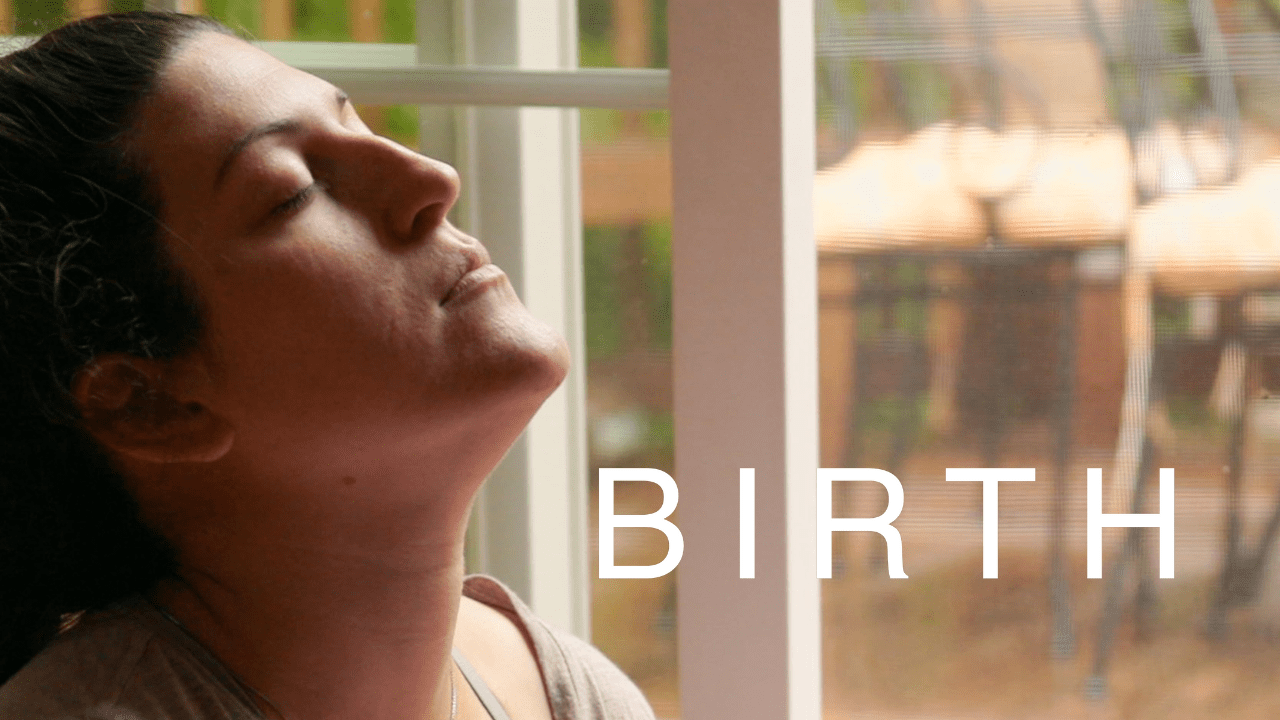
Stream from filmmaker: WATCH NOW | Birth (birththemovie.com)
Rent on Amazon: Birth: The Movie
“I don’t watch women suffer, I watch them do the most amazing, hard work and I watch them in their power, and their glory, and I love that.”
Birth follows one woman throughout her labor. Like These Are My Hours, this film explores a woman’s journey through labor, though a lot of commentary and supplementary content are in this film.
Heather vocalizes a lot through this birthing time, and much of it is low and deep. One person comments that it sounds like Gregorian chanting. I’d never considered that in thinking about birthing noises, but it really does…
…and there’s something profound about that.
Stop and Think
The birth team gives extensive commentary and while I don’t agree with all of their perspectives on the inevitability of pain, their comments are, on the whole, excellent. I love the sports analogies, because they really make you stop and think.
“If you watch any sports, do they look like they’re having fun? No! …they want to cross that finish line because it means something to them and they worked hard for it. We have all kinds of example of that around us. Why not birth? …Life takes effort. Birth takes effort.”
Heather uses a lot of affirmations and positive self-talk during the film, which is cool to see and helpful as you prepare for your own birthing time.
Using a Rebozo and Other Tools During Labor
There is also great use of a rebozo to support her belly throughout her birthing time. A towel also has a unique use during the pushing stage – don’t miss that!
Music has an immediate, powerful effect for Heather when she’s struggling, so this is another tool to watch and consider including in your own birth bag.
I love Heather’s clarity as the baby’s head is born, it’s truly awesome to see her present, and in control.
Can You “Train” for Birth?
The one commentary I did not agree with was the father speaking about how there’s no “training” for giving birth. He notes that you can “prepare” but not train as you might for a sporting event.
While it is true that you cannot replicate birth again and again as you might sprint again and again, for example, I do feel you can train for birth, at least on a level.
Many pro athletes use visualization extensively, and you can visualize your birth (one midwife in the film mentions that your birth often happens as you visualize it will).
Additionally, you can practice many birth techniques, positions, etc. repeatedly, and those come to you almost automatically during your birthing time. Just my thoughts!
Looking for a natural childbirth course that’s evidence-based AND focused on honoring your intution and power during your birthing time?
Click here for details on MamaBaby Birthing, my complete online birthing course. Used by thousands of birthing families, you’ll be completely prepared for a beautiful, safe, and confident birth experience.
The Business of Being Born – 2008
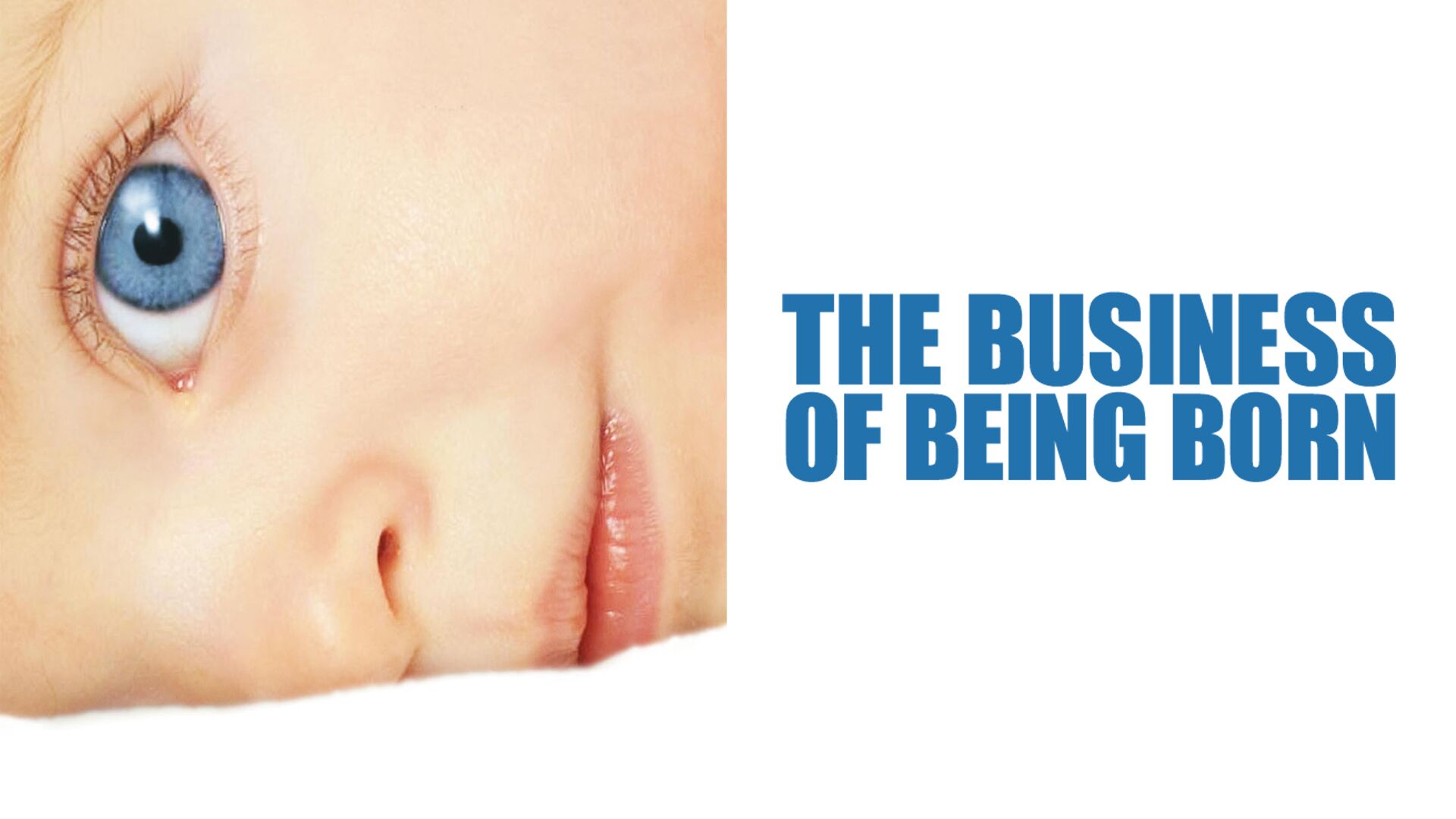
Watch free with trial on Amazon: Watch The Business of Being Born
Many library and universities offer this film via their documentary streaming services
Ricki Lake’s groundbreaking documentary on maternity care in America. This classic has changed many women’s experiences of pregnancy and birth completely. It will open your eyes!
Extensive commentary from experts on pregnancy and birth offers a clear idea on why the American model of obstetrician-led birth and heavy interventions is leading to worse outcomes for mothers and babies.
Sadly, the situation has not improved since the documentary was filmed (we have a maternal mortality crisis and the worst maternity mortality in the developed world and very high neonatal mortality), which is why this documentary remains a must-see for every pregnant mama.
You’ll love the many birth clips and the commentary from midwives, doctors, researchers, and mothers with various viewpoints.
More Business of Being Born – 2011

Rent/Buy on Amazon Prime:
General Summary:
More Business of Being Born is packed with information that the producers could not fit in the original Business of Being Born.
There is a lot of instructional material and many, many perspectives from care providers and from mothers and families. I highly recommend this supplement to the original film.
See below for details on each segment:
Part 1: The Farm
In this film section, producers Ricki Lake and Abby Epstein travel to The Farm Midwifery Center in Tennessee to meet with the midwives there, including Ina May Gaskin.
They discuss The Farm’s history and, of course, natural childbirth. The Farm midwives are full of wisdom and a joy to listen to!
They talk about why The Farm Midwifery Center has better outcomes for mothers and babies than most other places in the United States.
Ina May also shares her Safe Motherhood Quilt initiative, which has brought to light the poor maternal health statistics the United States.
Part 2: Celebrity Moms Share Their Birth Experiences
This section includes extensive interviews with celebrity moms. I was skeptical of this initially, but it turns out that listening to celebrity moms talk about their birth experiences is just like listening to any mom!
It really emphasizes the universality of birth and the experience of being a woman, because in the end, celebrity status didn’t matter and these women were mamas giving birth.
They experienced a wide variety of situations and conditions for birth, from home birth to emergency c-section, and it’s really fun to listen to their raw honesty.
It’s MY Body
Listening to Gisele Bundchen describe the birth of her son is incredibly inspiring, especially since she met some opposition in planning a home birth. This quote is helpful for mamas who want a home birth but feel their partner is not supportive (Gisele’s husband is football player Tom Brady!):
“It was a home birth and it was funny because he didn’t want me to have a home birth,” the former model shares. “He was like, ‘Absolutely not,’ and I was like, ‘Excuse me, you don’t get to choose that, it’s my body.'” (read more here: Gisele Bündchen Says Tom Brady Initially Did Not Want a Home Birth)
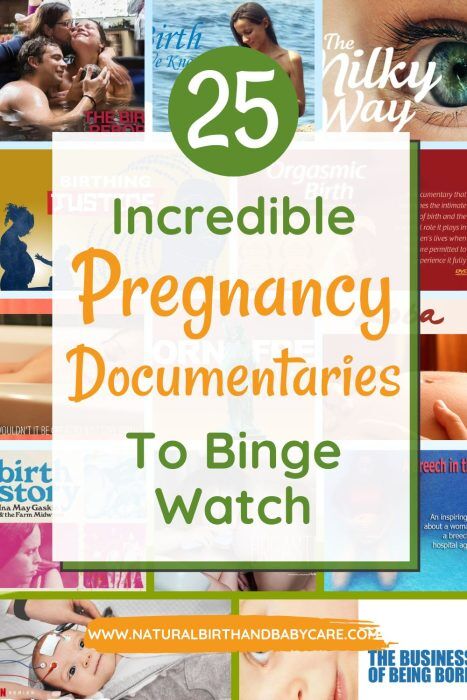
Part 3: Options for Your Birth
The third segment dives into more practical considerations for your birth. Watch this no matter how many weeks of pregnancy you’re at, but it’s especially helpful to watch earlier in your pregnancy when you’re considering choices, healthcare providers, where to give birth, etc.
Doulas are discussed in depth, including what they are and how they differ from midwives. You hear from many women who chose to have a doula and how she helped.
There’s also some discussion about why to choose a doula even if you’ll have your husband, best friend, mom, or other support person there for you.
Birth Centers
The documentary also explores birth centers as an option, with a tour of a birth center. You’ll understand when a birth center is a good choice and why other moms want to give birth in one!
Cesarean Epidemic
This portion of the film also looks at the reasons for the high worldwide cesarean section rates. It explores c-sections and looks at particular areas, such as Brazil, with high rates.
It also looks at variations of normal birth, such as breech births, that lead to high rates of this major surgery. You’ll feel much more informed about this alarming trend and its impact on maternal health (hint: it’s not a good impact on mothers or babies).
Part 4: VBAC and HBAC
VBAC, or vaginal birth after cesarean, has its own segment on the documentary. This is a great segment to watch even if you’re pregnant with your first baby… but it’s critical if you’re planning a VBAC.
Multiple experts share commentary on the safety of VBAC and why it’s a good option for most women. Importantly, they emphasize that repeat c-section is not the only way for moms who have already had a cesarean.
A small segment of this section is also devoted to HBAC, or home birth after cesarean, and why some women choose that option. Mother’s voices are shared throughout the entire documentary.
Want practical help with preparing for your VBAC birth? Check out my podcast series on how to have a successful VBAC!
The Mama Sherpas – 2015
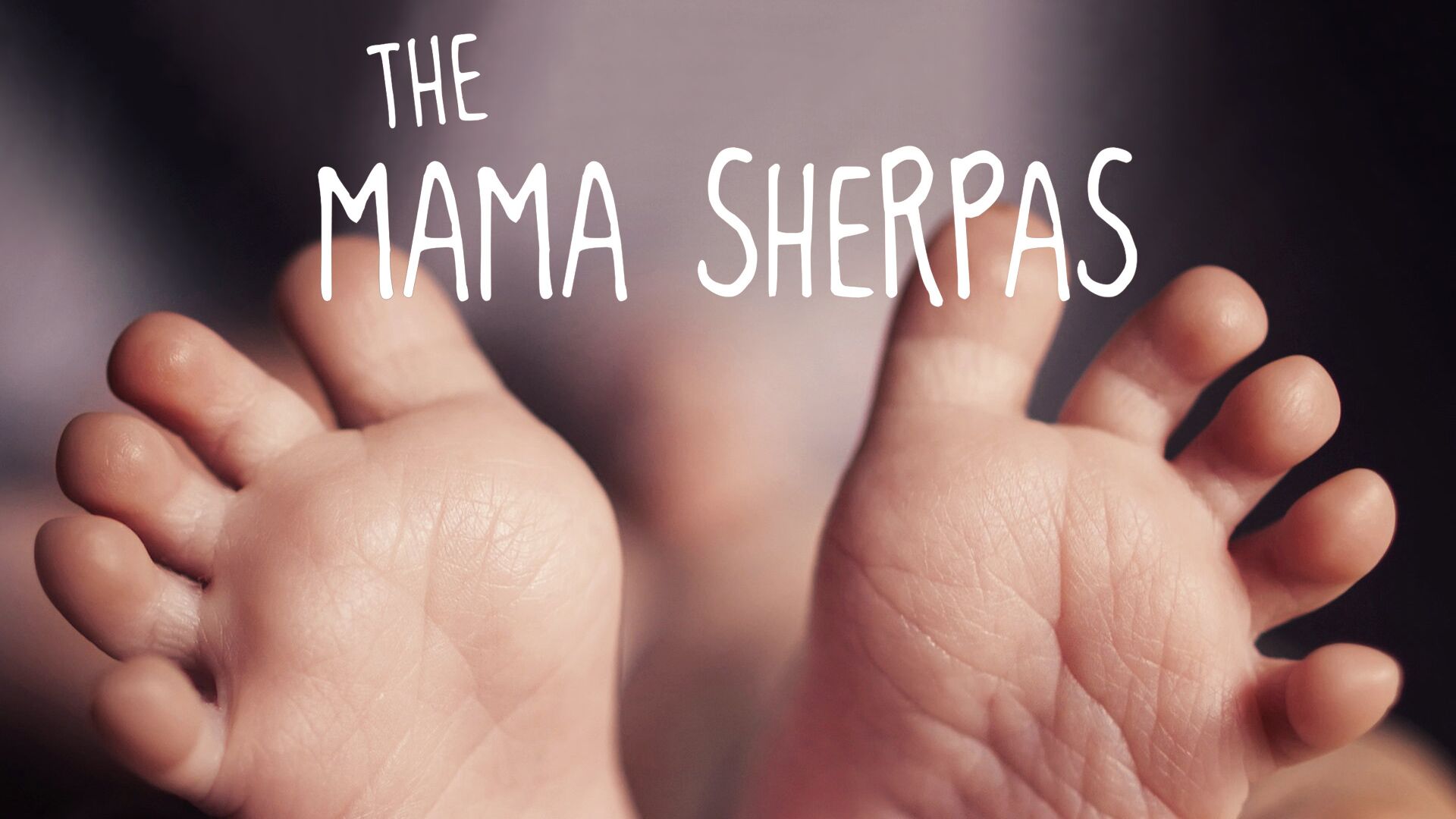
Watch free on the Roku Channel: Watch The Mama Sherpas
Rent/Buy on Amazon Prime: Watch The Mama Sherpas
Also produced by Ricki Lake, The Mama Sherpas takes a close look at how midwives and doctors can work collaboratively. The film discusses vaginal birth after cesarean, or VBAC, at length, so if you’re planning a VBAC this is a great choice for you.
It also explains how midwives consistently support mothers and shows several good hospital births.
If you’re interested in what hospital midwifery care can look like, or if you want to see how doctors and midwives can collaborate effectively, put this one on your watch list!
Babies – 2010

Rent/Buy on Prime: Watch Babies
This film has a special place in my heart because my two youngest daughters have watched it dozens of times! Aside from being a beloved film in my house, it’s a heartwarming look at birth to one year. The documentary follows four babies from four different cultures from their births to their first birthdays.
There is no commentary, so the only talking in the film is what’s captured as people talk to the babies or one another. Instead, it focuses on following these little ones as they grow in very different environments.
If you’re interested in how parenting looks around the world, or if you’d like to see how babies develop across the first year, this is a lovely film!
Babies (Netflix Series) – 2020
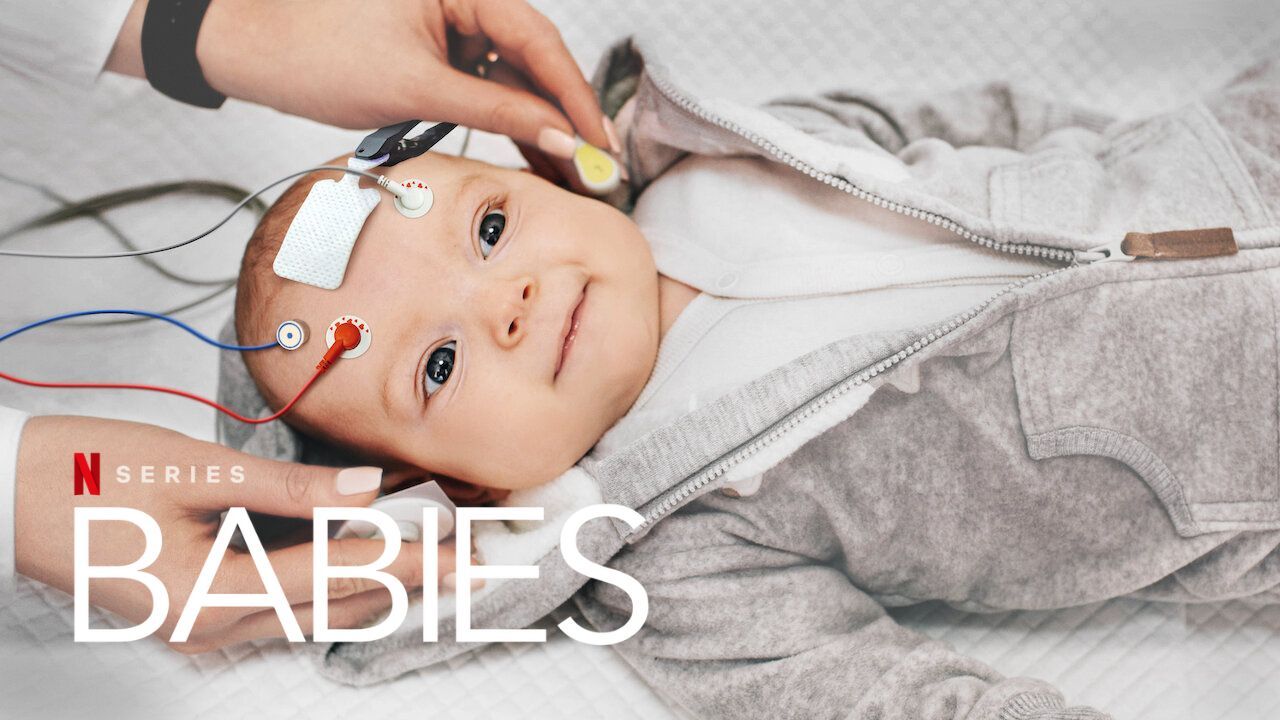
Stream on Netflix: Watch Babies | Netflix Official Site
Netflix’s Babies is a TV series that follows babies through their first year. Each episode is themed around a topic, such as love, food, sleep, crawling, talking, etc.
The final episode of Season 2 also delves into the realm of toddlers!
While the episodes follow families and share their perspectives, many experts in child development are also featured. Researchers who study infant development share their projects and their discoveries. The information on breastmilk in the feeding episode is really fascinating.
A wide variety of families are featured on the show and the babies are, of course, adorable! I think this is a great series to watch during pregnancy, as it gives you an excellent understanding of child development and why babies act the way they do!
The Secret Life of Babies – 2005
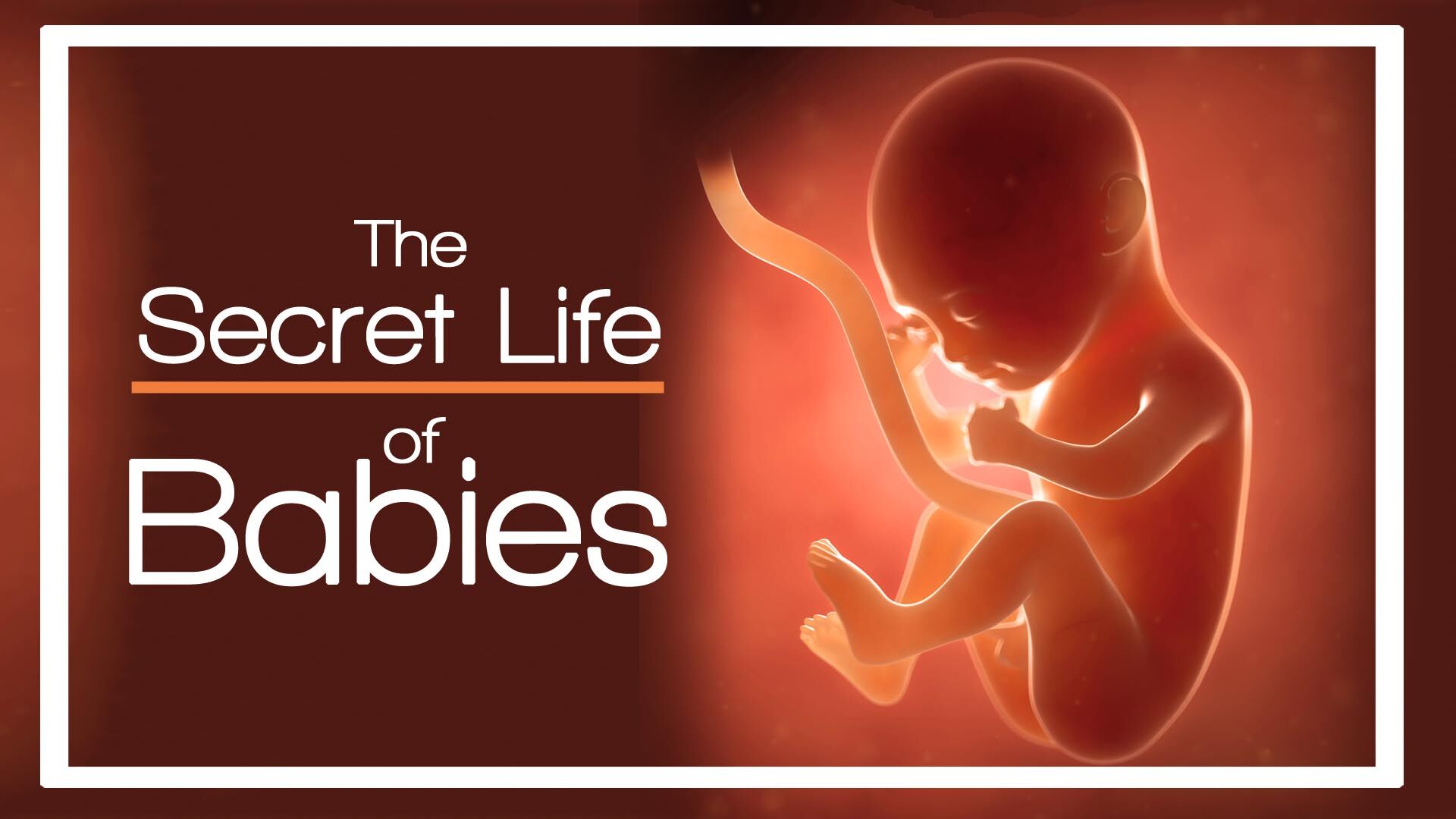
Free with Ads on Amazon: Watch The Secret Life of Babies | Prime Video (amazon.com)
Whether you’ve been around many babies or none at all, this well-made documentary will fascinate and delight you!
Packed with research into the remarkable skills and adaptations babies make, this film will help you appreciate your little one.
Stories of babies who have overcome remarkable odds help highlight recent research into the brains and skills of little ones.
Birth Story – 2012
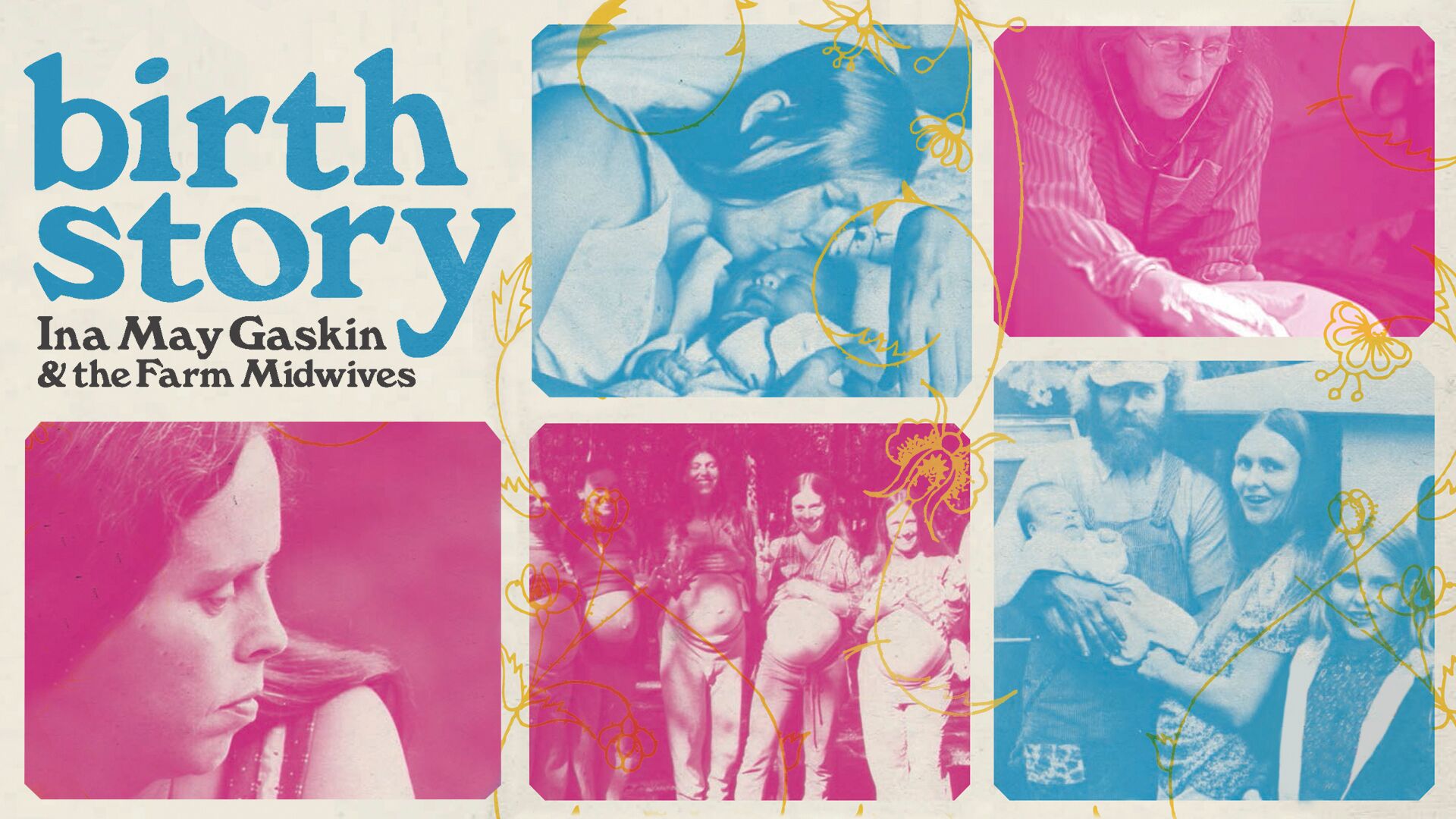
Free with ads on Tubi: Watch Birth Story: Ina May Gaskin and the Farm Midwives
Birth Story is a documentary on The Farm, the commune in Tennessee where midwifery made a visible resurgence in the United States.
While there were several enclaves where women took ownership of their health and advocated for the return of midwifery, The Farm became prominent after it published Spiritual Midwifery, which is still in print and inspiring mothers today!
The documentary explores the roots of the midwifery movement at The Farm and how that grew. Modern footage is juxtaposed with historical birth footage, showing that the care midwives offer today is just as important as it was when the birthing center was established 50 years ago.
Women interested in autonomy and rights in pregnancy and birth should watch this film!
Also click here for more on Homebirth safety and a link to The Farm’s home birth statistics!
The Birth Reborn, Part 3 – 2018

Stream on Netflix: Watch The Birth Reborn 3 | Netflix
I cannot find anywhere to watch Part 1 or 2 of this documentary series, but Part 3 is currently available on Netflix – and it is powerful! The film is focused on Brazil and has English subtitles, but the information within about the challenges birthing women face is universal.
Joyful, Ecstatic Births
There are absolutely beautiful births captured in this film, including many with the mother and father truly enjoying being with one another during the birth.
It is not an understatement to say they are breathtaking and so many are ecstatic and joyful.
Difficult Interventions
There are also several scenes that are hard to watch – in one scene, a newborn baby is given a bath, but the baby is crying and the mother’s absence is palpable. It left me feeling like it was almost violent, though it was a “normal” bath – it’s hard to watch.
There are also some shots from a cesarean birth (and a mother who shares her cesarean experience with raw, emotional, and powerful language) and a short clip of an episiotomy. Though that clip is blurred, it’s still enough to make you shudder.
There’s also a segment in the film where a woman describes her pregnancy loss and how poorly she was treated at the hospital.
More Incredible Births (and Important Conversations)
A male obstetrician attends a particularly touching water birth. The mother grasps his hand during her birthing time and it is so tender – more like a midwife than a doctor!
A unique feature of this film is recording snippets of conversations from mother’s groups. These groups do not simply discuss mother’s opinions or experiences – they are woman-to-woman communication about what the evidence says about birth, cesareans, etc. It’s very accessible and informative!
The photos and video clips that roll during credits are also golden!!
This is another film every pregnant woman should watch.
Want personal support to stay healthy and low-risk through your pregnancy? Longing for authentic guidance to make your sacred birth dream a reality?
Click to book a pregnancy and birth visioning call with me. We’ll talk about your hopes and dreams and explore if my pregnancy coaching program is a good fit for you.
The Face of Birth – 2012
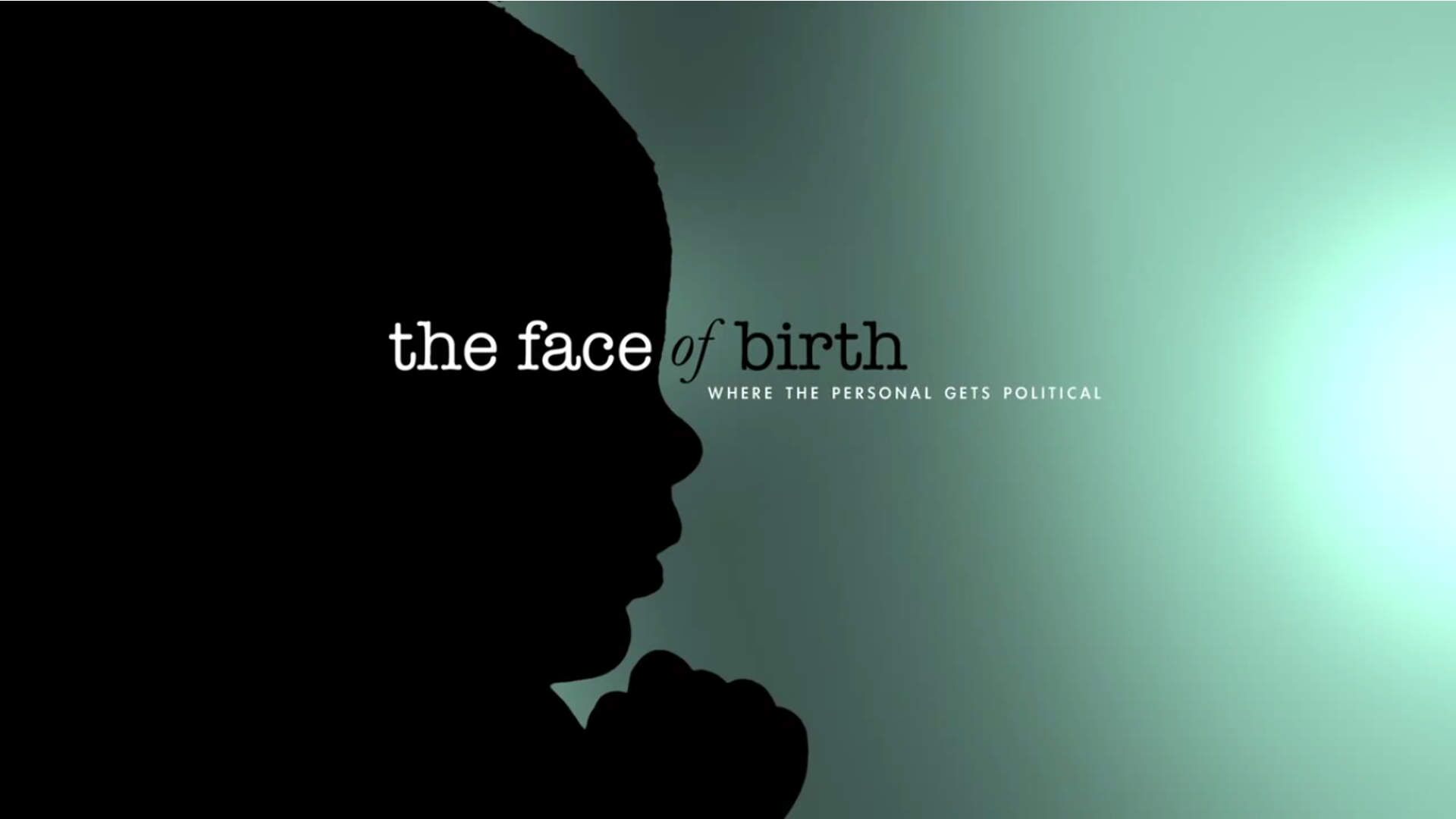
Watch Streaming on Amazon Prime: Watch The Face of Birth
This documentary explores childbirth in Australia and particularly focuses on the right to birth at home. It is a vital film for any woman considering a natural birth or who wants to birth on her own terms. It deeply considers what physiological, normal birth.
Many women speak throughout the film, sharing their perspectives and why having control over their birth experiences is so important to them.
Perspectives from Doctors, Midwives, and Anthropologists
Expert commentary explores how birth works, and why having normal, undisturbed birth is so important to mother and baby. The wide range of voices, from doctors and midwives to anthropologists and researchers, make this a wealth of information.
I like that they chose to have both mothers who wanted home births and a planned cesareans speak. Hearing these different perspectives is interesting, especially when juxtaposed with one another. You truly see how having an empowering experience is what matters.
The Rights of Birthing Women
This film also considers the birthing rights of indigenous populations and traditional, indigenous midwives. It is really respectful in how it does this, and I like that it ultimately champions the rights of all women to birth on their own terms.
One point I found really insightful was the comparison of the “mother-birth” framework and the “child-birth” framework.
Much of society follows the latter, child-centered framework that believes that a woman sacrificing herself for her child makes her a better mother. This belief pattern is used to push any and all interventions at mothers, who endure them to be “good mothers.”
Strong, Empowered Mothers
The mother-centered framework is less accepted (it at all); this framework says that what is good for the mother helps her mother her baby better. Strong and empowered mothers can mother their children better.
This film is excellent and it will challenge you to consider so much… does it not benefit our babies to have strong, empowered mothers as they start life together?
(NOTE:Want Labor Pain Techniques that REALLY Work? Get these 11 mom-tested techniques for handling contractions from start to finish Get the mom-tested natural labor techniques here.)
A Breech in the System – 2008
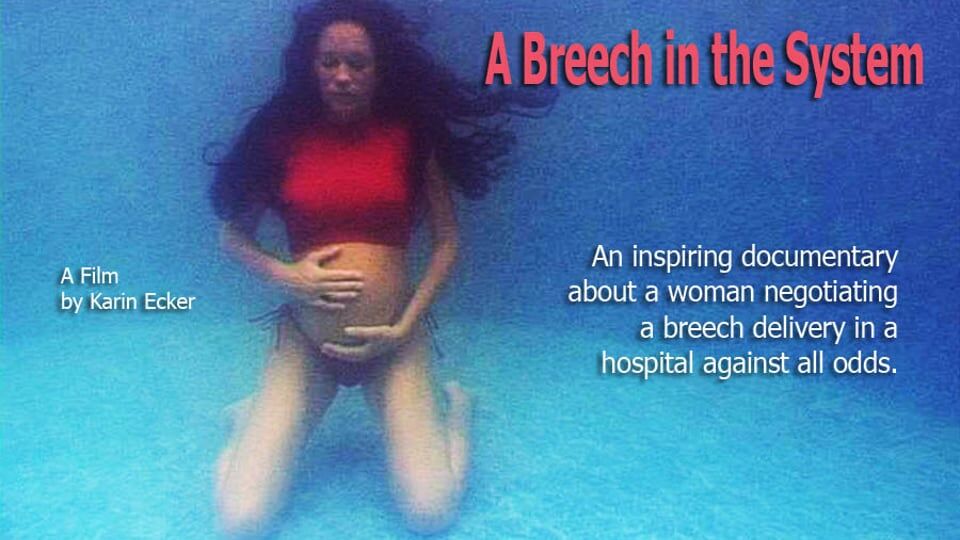
Watch on Kanopy via your university or public library https://www.kanopy.com/en/tadl/video/47278
This short documentary follows a mother who chose to have a vaginal breech birth even though her hospital system told her that her breech baby meant an automatic cesarean.
The film shows her thought process and decision-making while interviewing several experts who served on her birth team.
Vaginal Breech Birth Can Be a Safe Option
Hearing the commentary and understanding what each person on the birth team worked through to be present for the birth is enlightening.
The birth itself is caught on film and is beautiful!
The baby did receive a couple of breaths after being born, but quickly began crying, and his color was beautiful right away.
This is one of the most touching scenes I have seen because the mother stands beside her baby, touching him during the breaths. He’s then placed directly on her chest. It is magnificent and powerfully shows how important you are as a mother! What an awesome example this mama sets!!
(NOTE: Want a Perfect Birth Plan Template? Use this template and step-by-step videos to write a birth plan that gets your birth team on your side for a beautiful birth experience! Get the birth plan kit here.)
The Happiest Baby on the Block – 2002

Steam on Amazon: Watch Happiest Baby On The Block
The Happiest Baby on the Block is not a documentary as much as it is an instructional video, but I absolutely have to include it in this list because I think every parent should see it.
Dr. Karp’s book of the same title came out many years ago, and the film itself is a little older, but the advice is timeless.
I can confidently say you can skip the book and go right to the film, which follows a number of families as they learn to soothe their fussy babies! The skills you will gain in how to settle and calm your baby make this film absolute gold.
It is a LIFESAVER!
Every expectant or new parent should watch this!
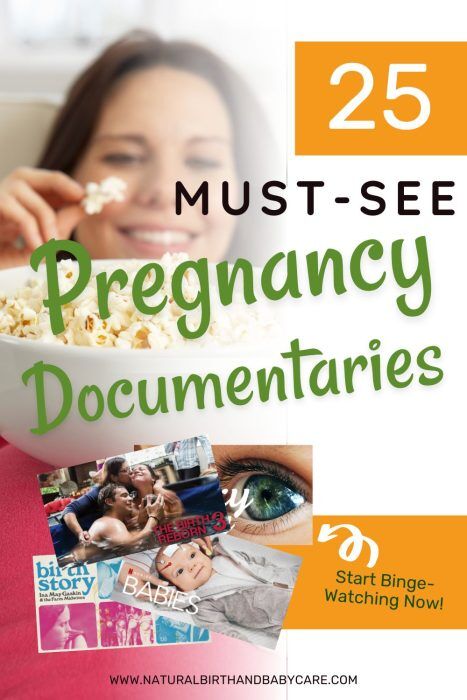
Loba Birth Film – 2015

Watch free on Tubi (English subtitles available): Watch Loba (2015)
Loba is a powerful film that travels through Spain, France, Mexico, and even Cuba to look at childbirth today. Osteopath Catherine Bechard uses women’s stories to share how natural birth, midwives, and birth at home are disappearing worldwide.
At times these women’s stories are heartbreaking, but the deep understanding of the traditions of birth and why they are important shine through.
Women Need Options in Birth
This film highlights how shrinking options for birth hurt both mothers and babies. It also explores women and programs who are working bring back birthing options.
You’ll hear the fundamental belief in birth as a transformative experience through the voices of many of the midwives interviewed for the film. I really enjoyed this deep dive into birth worldwide, and the information is vital for every woman to have.
Breastmilk – 2014

Rent/Buy on Prime: Watch Breastmilk | Prime Video
“We experience failure as a biological problem, when in fact it’s a social problem”
This film is from The Business of Being Born producers Abby Epstein and Ricki Lake. In some ways, I hesitate to recommend the film, because so many of the mothers whose stories are recorded struggle with breastfeeding, with many giving up completely.
Having said that, their experiences mirror what many women experience, especially in countries like the United States, where breastfeeding support is limited to lip service and a few overworked public health services.
While the disappointment and even emotional pain these mothers experience are raw (and not encouraging overall), the commentary in the film is golden.
Finding Breastmilk in Abundance
Fiona Giles and Bernice Hausemen, both PhDs who have written about breastfeeding, give deep insight into the breastfeeding “problems” many mothers face, and how they are not biological problems but societal ones.
They discuss our current “scarcity” model of breastmilk when we should look at breastmilk with an abundance perspective!
Diverse Breastfeeding Families
The film explores a diverse range of mothers, including moms from many ethnic backgrounds, extended breastfeeding moms, lesbian moms, and a brief spotlight on a gay couple.
All of these mothers (and couples) provide deep insights into breastfeeding, different perspectives of mothers and fathers, and what could help enhance breastfeeding success.
I highly recommend you also watch Milky Way for a deeper understanding of the importance of breastfeeding beyond food.
Microbirth – 2014
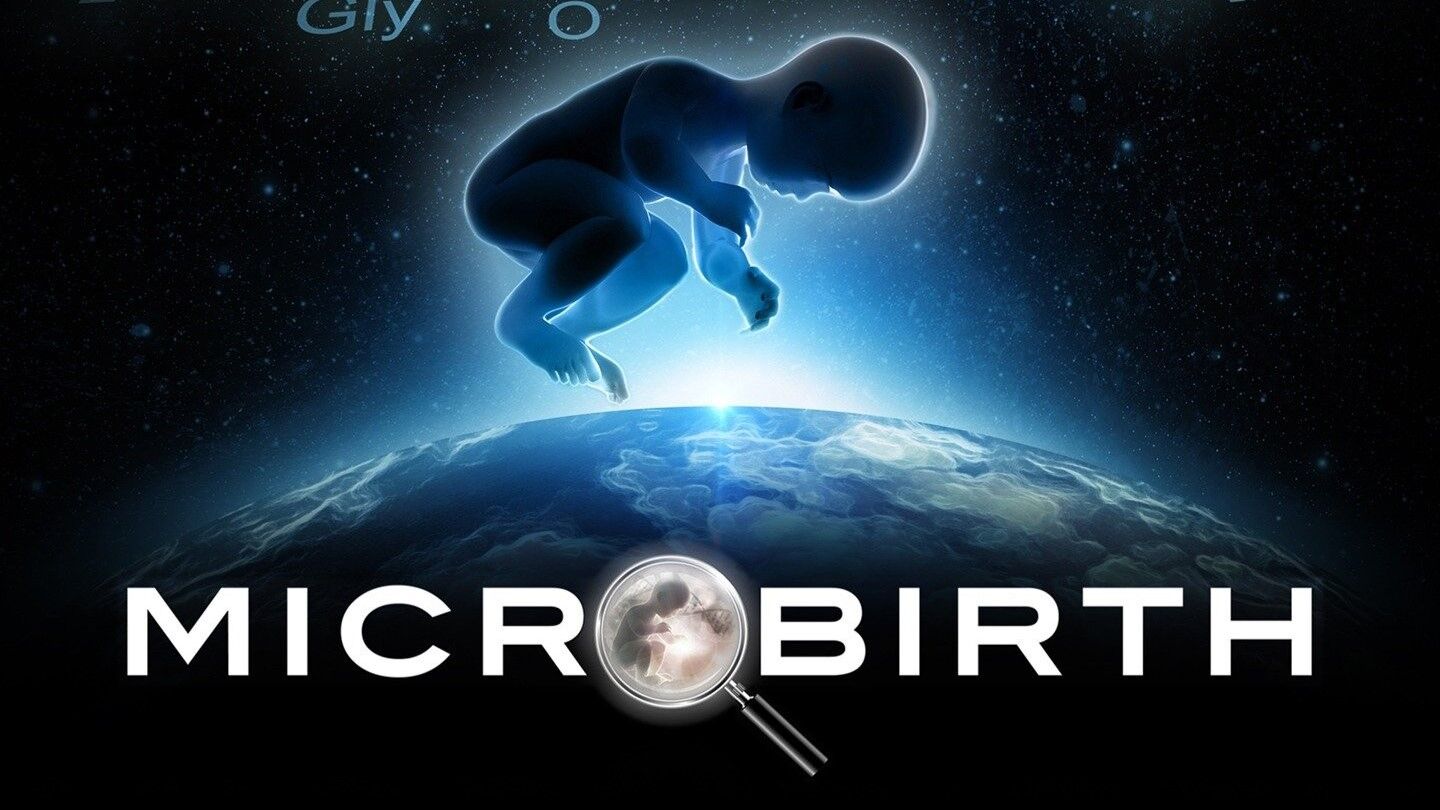
Free with ads on Tubi: Watch Microbirth (2014)
Microbirth is an interesting film that at first seems unrelated to pregnancy and childbirth. It opens by describing the microbiome and its importance. The film is well-balanced and discusses much recent research on the microbiome and how it impacts human health.
I’ll be honest, I didn’t find Microbirth to be the most interesting documentary on the list. I think the information is good, but discussion of birth doesn’t occur until well into the film.
There is an important foundation laid until that point, but I found this film drier and less compelling than many of the others on the list.
The microbiome is important to understand, especially since it does appear critical to lifelong health, so I think this is an important documentary to see – it’s just not one of the most riveting on the list!
Born Free – 2022
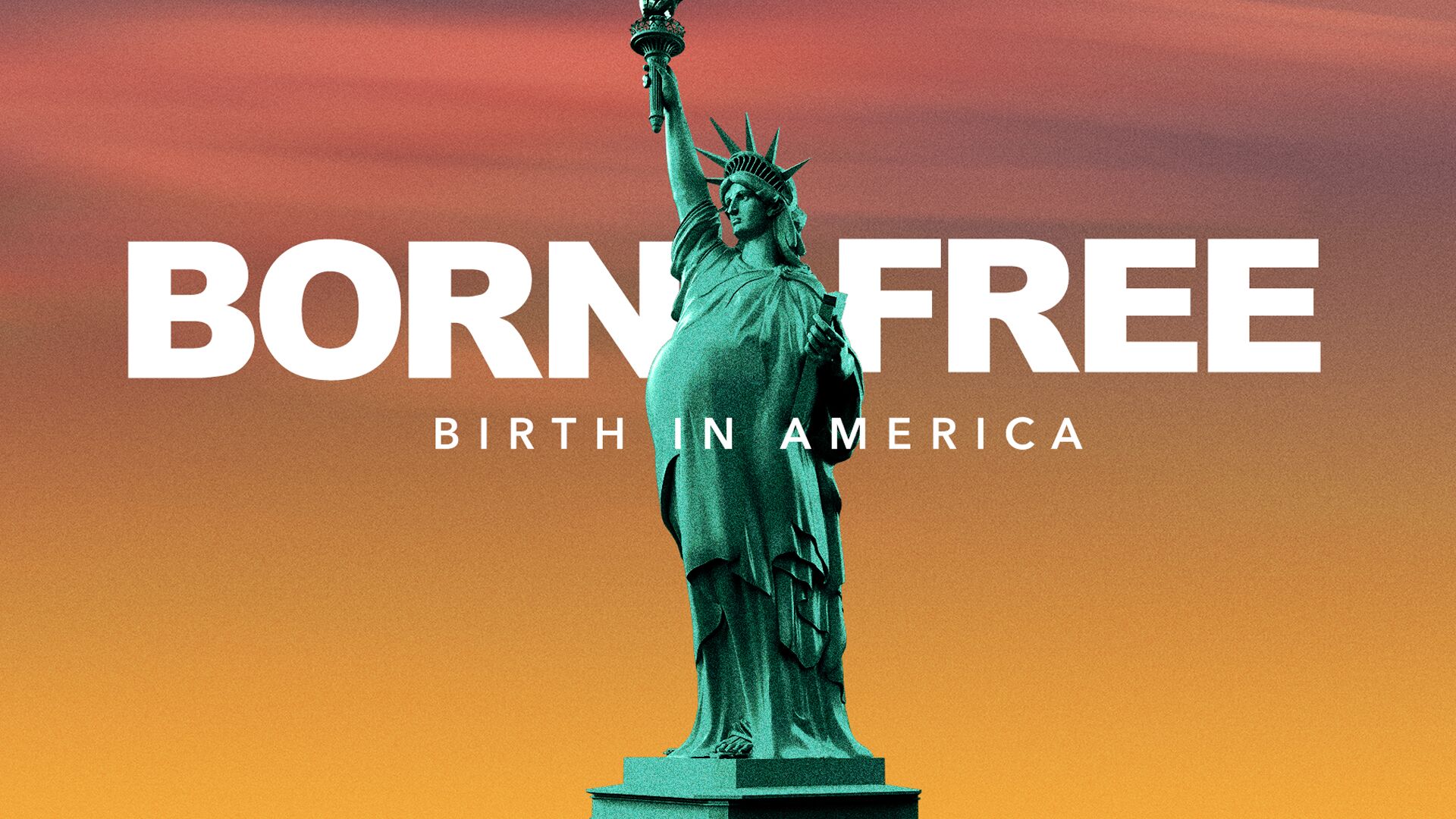
Free with Ads on Prime: Watch Born Free: Birth in America | Prime Video
Born Free: Birth in America vividly shows the reality of care for pregnant moms in the United States. After finding herself pregnant, the filmmaker explores why maternity care in the United States differs greatly from her native country – and many others worldwide.
Racial Disparities in Birth
Her journey touches on the role of midwives in birth, women’s choices in birth, mental health, and how pregnancy and childbirth highlight stark racial disparities in health care.
It looks at how maternity care fails the black woman and why the rate of white women experiencing complications and loss is lower. This film also covers some on political activism.
Though it touches on many topics, the documentary is easy to follow and engaging. It highlights tough questions about why we aren’t doing more for women and babies.
Overall it presents a systemic analysis that’s valuable to all pregnant women – if you’re birthing in this system, you need to see Born Free.
40 Weeks – 2014
Watch free on Youtube: Pregnancy Documentary – 40 Weeks
This is overall a fun documentary featuring the voices of many different women and families. It follows their pregnancies from the beginning through the birth of each baby.
I really enjoyed how the film is created out of moments with each mom or couple describing how that part of pregnancy went for them. There is some advice from doctors interspersed within the film (surprisingly, the nutritional advice given by the OB in the first trimester segment is pretty good!).
Do note that the film assumes a typical testing schedule, lots of ultrasounds, and other routine procedures. There isn’t a discussion on the pros and cons of testing, just the assumption that it should be done.
Many of the births end up in c-sections, but midwives attend several of the births in the film. There are three natural births.
Overall, the focus is not on how the women give birth, but their pregnancy experience. While it takes a very conventional view of pregnancy with the doctor as the “expert,” the film is enjoyable to watch.
Midwife – 2013
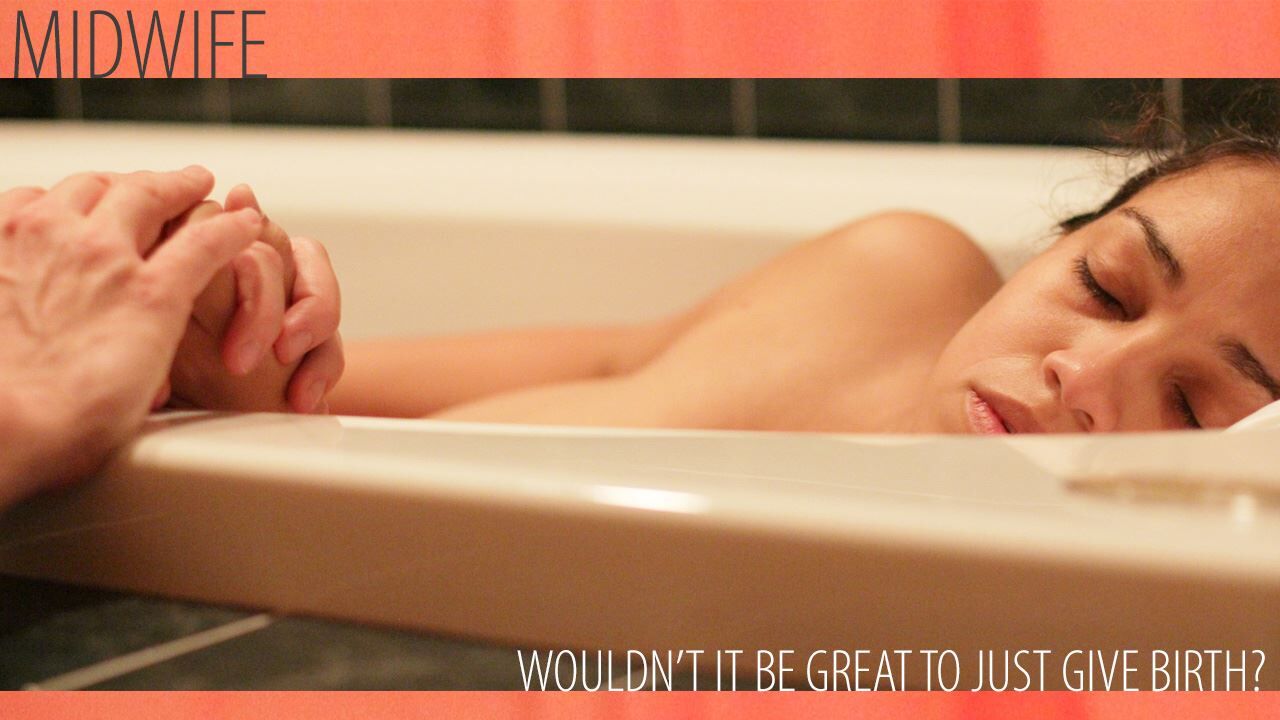
Rent/Buy Streaming on Amazon Prime: Midwife
“We can’t shake the bullshit and just have our babies”
The above quote is raw – and it’s real, just like birth. This film follows one midwife through several births. It also includes thought-provoking commentary from many midwives and legislators.
This must-see film explores midwifery in the US and what home birth is really like. There is a lot of myth-busting!
You’ll appreciate the diverse views, often juxtaposed with one another. For example, you hear from a midwife who used to attend homebirths as a certified professional midwife, and who now attends birth in the hospital as a certified nurse midwife.
And you’ll hear from a midwife who worked in the hospital and now serves as a home birth midwife.
What is Undisturbed Birth?
It really explores what undisturbed birth is – and if it’s even possible to have that happen in a hospital. It will make you think, and understand better how to advocate for yourself.
There is intense discussion on women’s rights and the right to autonomy in birth. This is an important conversation that women (and you) deserve to hear and to have!
Hearing From Parents (Including Dads!)
The film also features, extensively, the voices and perspectives of families choosing home birth. There are a wide variety of family situations and birth situations presented, making their voices insightful and valuable.
Each birth included in the film is beautiful, but of note is a birth with a shoulder dystocia handled at home. If you have wanted to understand how a midwife’s training prepares her to smoothly handle such a situation, this is a great birth to watch.
There’s also a good VBAC birth on the film – a home birth after two cesareans!
Looking for a natural childbirth course that’s evidence-based AND focused on honoring your intution and power during your birthing time?
Click here for details on MamaBaby Birthing, my complete online birthing course. Used by thousands of birthing families, you’ll be completely prepared for a beautiful, safe, and confident birth experience.
Milk – 2015

Rent or Buy to Stream on Amazon Prime Video: Watch Milk
“It should not be the corporate greed that should feed the future, it should be the mothers.”
Milk is a thought-provoking and well-balanced documentary about breastfeeding, the rights of women and children, and more. The film ranges all over the world, and subtitles are needed for many segments.
Getting a global perspective on how we feed our babies is vitally important.
When you see how breastfeeding saves the lives of children in developing countries and of premature babies, you understand just how important it is to your baby.
Balanced Viewpoints
The film is well-balanced, including the perspectives of many mothers who have made many feeding choices. Experts, government officials, and legislators also speak.
You’ll hear from a mother who chose to formula feed, and sit in on a group of mothers as they discuss their choices. You also hear from a teen mom who wanted to have a natural birth and breastfeed, but struggled.
How Birth Impacts Breastfeeding
Milk also looks at the link between how women give birth and their breastfeeding experience. Some insightful quotes from the film help put birth and breastfeeding into perspective:
“I think society has turned birth into a big industry”
“From the very beginning of life, the mom and the baby should be together.”
“This society castrates a woman during childbirth, it robs her of the power that a natural birth gives her.”
There are a few births shown in the film, including some standard hospital births, a cesarean birth, and a beautiful natural birth.
The Breast – Bottle Debate
While in many countries today, breastfeeding and bottle-feeding are looked at as a “choice” or even as something meant to guilt or shame mothers (hence the “fed is best” campaign), the truth is, formula is a powerful, money-making industry.
This film explores that topic deeply, and in a way that may shift how you look at this issue of “choice.” Is it really about a woman’s rights when the motivation behind formula is corporate profits? There is bias when the marketing of “choice” grows corporate bank accounts.
Is it empowerment, or manipulation for corporate profit?
Does it serve a corporation more than mothers and babies to insinuate that this is about choice? The film will get you thinking.
It discusses The International Code of Marketing of Breast-milk Substitutes, which is supposed to deter companies from putting profits before human life.
Women’s Skin For Pleasure Versus For Life
A poignant scene in the film depicts one mother questioning why she’s going into bathrooms to feed her baby while there are women’s bodies on display on billboards all over the country.
This segment, done in a lyrical chant with powerful imagery, is worth stopping to think about.
Why is that we support women showing skin when it benefits advertisers, but we don’t support women who breastfeed? Why do we champion women’s “choice” to formula feed when it grows corporate profits, but we don’t encourage mothers, support working mothers, feed mothers healthy food, and in doing so, help them have abundant milk for their babies?
Milk will certainly cause you to stop and think about the forces behind these choices and decisions – because they are not altruistic.
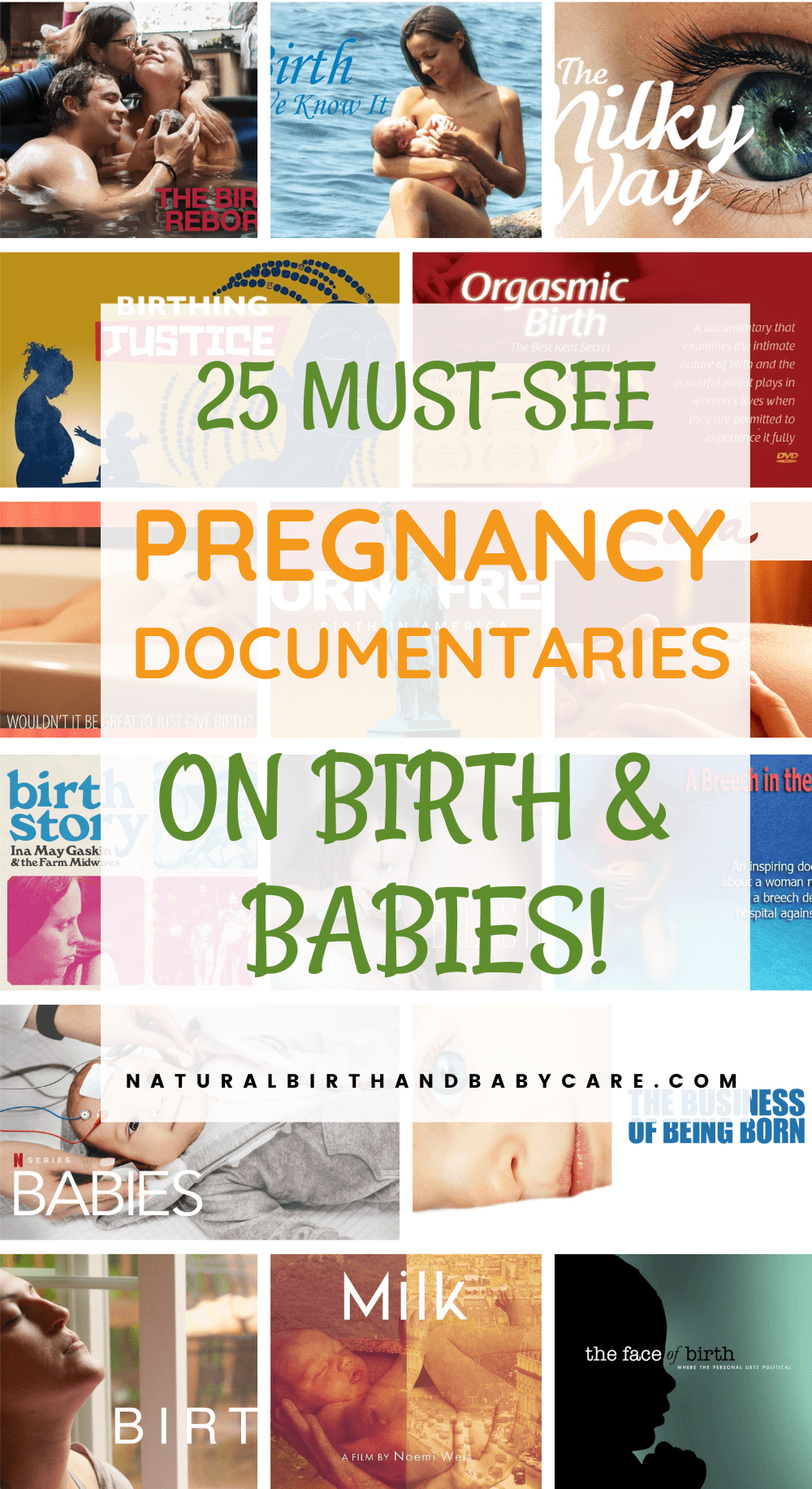
More Resources
Now that you’ve binge-watched all these beautiful birth films, here are some practical resources to help you have the powerful, ecstatic birth you and your baby deserve to have!
Want personal support to stay healthy and low-risk through your pregnancy? Longing for authentic guidance to make your sacred birth dream a reality?
Click to book a pregnancy and birth visioning call with me. We’ll talk about your hopes and dreams and explore if my pregnancy coaching program is a good fit for you.
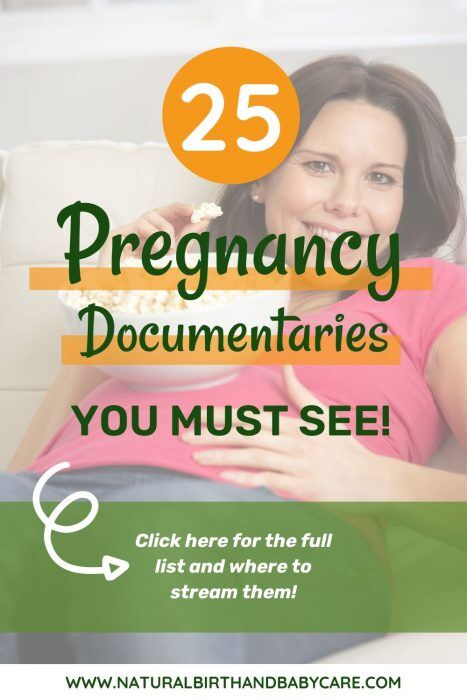
Trending Products


